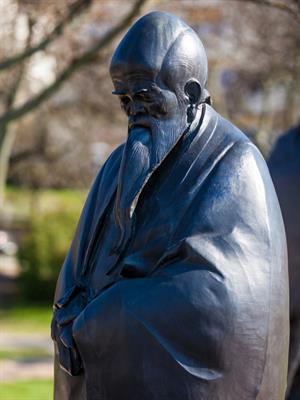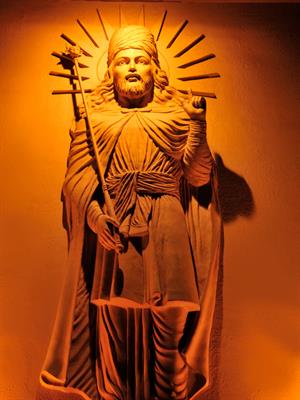
PUMPA - SMART LEARNING
எங்கள் ஆசிரியர்களுடன் 1-ஆன்-1 ஆலோசனை நேரத்தைப் பெறுங்கள். டாப்பர் ஆவதற்கு நாங்கள் பயிற்சி அளிப்போம்
Book Free DemoLao-Tse and Taoism:
Taoism was another principle that ruled the thoughts of people in pre – Confucian era. Lao-Tse was born in \(604\) \(BC\). He was \(53\) years older than the latter philosopher Confucius. Lao-Tse left the tumultuous state life and lived his life in rural parts of China.
Tang Dynasty: Taoism became the religion of the country under the rule of the Tang dynasty.
The Principle of Taoism emerged on the lines of folk religion (rural folks of China); the life of Lao-Tse was unable to track by historians as he wrote a book with two parts and was slowly excluded from social life. Hence, Taoism is a philosophy as well as a religion.
The Taoist principles of Lao-Tse:
The teachings of Lao-Tse emphasised “going with the flow of nature”, and the human acts should go in tandem with the natural forces.

Lao-Tse
He also believed that the root cause of unhappiness of humans is due to selfishness and the lack of harmony. Also, he stated that the self-interest of humans increases their desires and leads them to misery.
Tao-Te-Ching: Also known as the “Book of the way”, was the book written by Lao-Tse, which speaks about the virtues and conduct of people in life.
When humans started accumulating knowledge, they developed a civilisation, which increased their greed and left them unhappy. This was one of the tenets of Taoism.
The Middle-East and the Zoroastrianism:
Zoroastrianism, considered one of the oldest religions of the world, has followers to date. It flourished under the empire of Persian kings who belonged to the \(6th\) century. It was also believed to be the “World’s first Monotheistic faith”.

Zoroaster
“The Parsis” are refugees of Zoroastrian areas who settled in Persia and in parts of India to escape the religious persecution by the Muslims.
Zoroaster: He was considered the founder of Zoroastrianism, was a prophet by nature, and was born in North-eastern Persia.
Zoroaster disliked the worship of numerous gods during his period which he believed was the reason for persecution, so he announced the world and his followers to worship one god, the“Ahura Mazda / Light god”.
Zend – Avesta: This book is the sacred book of Zoroastrianism written by Zoroaster which speaks about the cosmogony, law, religious hymns and the teachings of the Zoroaster. The principles found in this book are very similar to the line of Vedas.
The Principles of Zoroaster:
He firmly believed in sound morality for the proper functioning of the State, Society and the Administration. Zoroaster also asserted that the light god has \(7\) qualities.
\(7\) Qualities of Ahura Mazda:
1. Light
2. Well-being
3. Immortality
4. Piety
5. Right
6. Good mind
7. Dominion
Fire and the water are treated with high respect in Zoroastrianism, while image worship and other form of sacrifices were not encouraged. According to the Zoroastrian principle, “worshipping fire was the most sacred form of worship”. Charity and service to the destitute are part of the religion.
Zoroaster also propounded that the deity or Ahura Mazda is:
Omniscient – Knows everything
Omnipresent – Found everywhere
Omnipotent - All-powerful
Reference:
Lao-Tse - Anamaria Mejia / Shutterstock.com
Reference:
Zoroaster - RAMNIKLAL MODI / Shutterstock.com